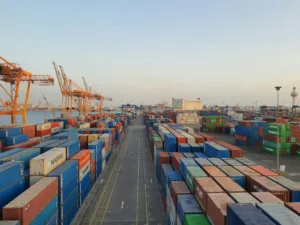In der Lieferkettenplanung 2025 stehen Unternehmen vor neuen Herausforderungen. Eine effiziente Lieferkettenplanung 2025 ist entscheidend, um Produkte verfügbar zu halten, Kosten zu senken und Kunden zufriedenzustellen. Doch häufige Fehler wie eine fehlerhafte Bestandsverwaltung, mangelnde Flexibilität oder schlechte Kommunikation können zu Engpässen und höheren Betriebskosten führen. In diesem Beitrag zeigen wir die größten Stolperfallen und effektive Strategien zur Vermeidung.
Grundlagen der Lieferkettenplanung und Supply Chain Management

Supply chain management (SCM) encompasses all processes associated with the movement of goods from the manufacturer to the end consumer. It includes not only logistics, but also co-operation with suppliers, warehousing and inventory management. A well-planned supply chain helps to increase efficiency and reduce costs. It enables companies to react flexibly to market developments, utilise resources better and deliver products on time. In view of globalised markets, an optimised supply chain is essential for the success of companies.
Die häufigsten Fehler in der Lieferkettenplanung 2025 und ihre Auswirkungen
Fehlerhafte Bestandsverwaltung in der Lieferkette: Ursachen und Folgen
Inventory management can be a challenge, as both too much and too little stock can cause problems. High stock levels tie up capital and cause high storage costs, while too little stock can lead to supply bottlenecks and customer dissatisfaction. To minimise this risk, dynamic inventory management based on accurate demand forecasts and up-to-date sales data is required.
Lieferkettenplanung 2025: Mangelnde Flexibilität und ungenaue Prognosen
In a constantly changing market landscape, flexibility is crucial. However, many companies react too slowly to changes or rely on inadequate forecasting techniques. A lack of accuracy in predicting fluctuations in demand or production bottlenecks can lead to inefficient processes and higher costs. An integrated system for accurately forecasting and adjusting production to current demand can significantly reduce these problems.
Risikomanagement in der Lieferkettenplanung: Krisenvorsorge als Erfolgsfaktor
Effective risk management is crucial to ensure supply chain resilience. Companies that fail to recognise risks such as supplier failure, natural disasters or political instability early on are vulnerable to disruption. Proactive risk management helps to minimise disruptions and take quick countermeasures. Early warning systems and good crisis preparedness ensure continuous supply capability.
Critical areas of supply chain planning: bottlenecks and miscommunication

Bottlenecks in the supply chain can arise due to inadequate communication and a lack of transparency with suppliers and partners. These bottlenecks lead to delays and inefficient processes. To avoid this, it is important to ensure clear communication and regular coordination. The use of modern communication technologies and a well-structured flow of information help to recognise bottlenecks at an early stage and resolve them quickly.
Strategien zur Optimierung der Lieferkettenplanung 2025
The use of digital tools such as the Internet of Things (IoT) and artificial intelligence (AI) facilitates process automation and optimises data analysis. These technologies help to monitor inventories in real time, improve forecasts and make processes more efficient. Agile methods and lean management help companies to react quickly to changes. By combining these strategies, companies can make their supply chains more efficient and resilient.
Fazit: Erfolgreiche Lieferkettenplanung 2025 durch Innovation und Strategie
The future of supply chain planning lies in increasing digitalisation and flexibility. Companies must adapt their processes to the constantly changing market conditions and at the same time build a cost-efficient and sustainable supply chain. Technologies such as blockchain, automated warehouse systems and AI-driven decision-making processes will further increase efficiency and help companies to react more quickly to changes.
To summarise, successful supply chain planning is based on precise forecasting, flexible processes and the integration of new technologies. Companies that invest in these areas are ideally equipped for the challenges of the future.
For further information, please contact contact@circly.at or use our contact form https://www.circly.at/en/contact to book an appointment.
